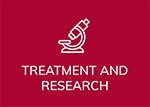There have been many advances in chronic lymphocytic leukemia/ small lymphocytic lymphoma (CLL / SLL) treatments over the past decade, with several potent novel agents targeting molecular pathways within CLL cells receiving FDA approval.
At the American Society of Hematology Annual Meeting and Exposition, ASH 2021, Dr. Anthony Mato et al. reports the results from this large multi-centered retrospective study on the evolution of molecular testing patterns, treatment patterns, and clinical outcomes over time in patients receiving first-line CLL treatment in a real-world US database.
Takeaways:
- 3654 patients with treatment-naive CLL were studied
- The mean age at 1L treatment initiation was 70 years
- 64.3% of patients were male
- 72.1% were White, 8.2% Black, 3.9% Hispanic/Latino, 1.0% Asian, and 14.9% were of other ethnicity/race
- Testing Patterns
- Compared with 2015–2016, testing rates were higher in 2019–2020 for chromosome 17p deletion (del(17p); 36.1% vs 45.7% and for IGHV mutation status (84.7% vs 89.2%
- Treatment patterns
- 45.7% received regimens including novel targeted oral agents
- 33.4% received chemo-immunotherapy (CIT)
- 19.7% received anti-CD20 monotherapy (rituximab or obinutuzumab)
- Novel targeted oral agents increased from 27.1% (2015–2016) to 63.8% (2019–2020) use of CIT and chemotherapy decreased over time
- Outcomes:
- Time to next treatment or death (TTNTD) was 47.0 months for patients who received novel targeted oral agents and 41.5 months for patients who received CIT
Conclusions:
As we would hope, the use of novel targeted oral agents increased over time, with a corresponding increase in TTNTD. After many years, more patients are getting the benefits of the proven clinical superiority of novel targeted oral agents. However, we still need to ensure that all patients get their best possible care. More than half of patients are still not being tested for del 17p when all the guidelines insist that it be checked before starting treatment. One in three is still getting CIT when it’s proven to be an inferior choice for nearly all patients.
You can read the original ASH 2021 abstract at Real-World Treatment Patterns and Outcomes of Patients with Chronic Lymphocytic Leukemia (CLL) Receiving First-Line (1L) Therapy in the United States (US).
Listen to Dr. Koffman’s abstract review below.
Stay strong. We are all in this together.
Brian
Brian Koffman MDCM (retired) MS Ed (he, him, his)
Co-Founder, Executive VP, and Chief Medical Officer
CLL Society, Inc.

















